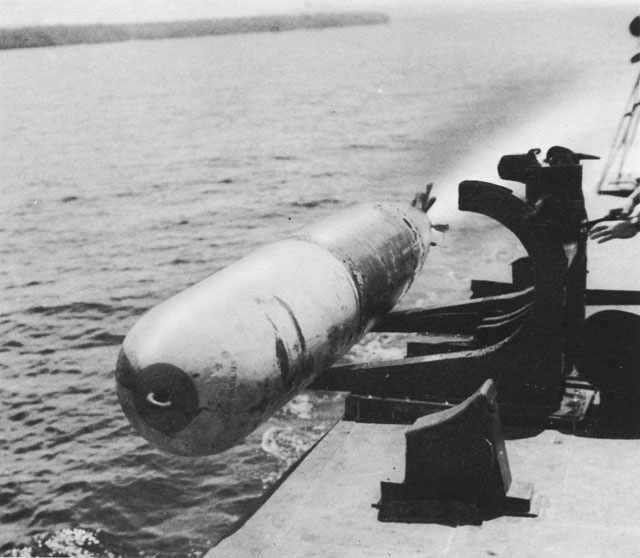Additional hot run info...
The Mk 8's carried by the PT boats also had a history of hot runs, even though their engines and starting systems were similar to the Mk 14. The tubes on the PT's were fired using a black powder charge. If the charge only partially fired - which was fairly common - the weapon only partially left the tube and got stuck, but the starting switch got tripped so you had a hot run. Without water to cool it the engine would overheat and fly apart sending shrapnel all over the deck. There was even the possibility of that event detonating the warhead and of course that would be a bad day for the PT. The fault laid not with the torpedo, but with the tube and its' firing system. Given the limited engineering capacity of the PT there didn't seem to be a better solution in 1940 when it was designed. But in my timeline there will be...
In the 1960's the primary anti-submarine torpedo in the USN was the Mk 37. It was an electric torpedo, 19" diameter, swim out, pattern running, with passive/active homing. The early versions though were quite buggy, especially in the area of her batteries. They were notorious for shorting out and overheating. Hot runs, while not exactly common, happened far more often than they should have. A hot running Mk 37 was one of the early theories that tried to explain the loss of the USS Scorpion (SSN-589). This was the leading theory until later study of debris from her wreck pretty well showed that the boat's battery, not a torpedo, was what exploded and caused her loss. By the time I arrived on the USS Darter (SS-576) in 1984 the Mk 37 had been thoroughly developed and was a pretty good weapon. Along with 12 Mk 48s in our forward torpedo room, we carried two Mk 37 Mod 3 versions in our after torpedo room until 1986 when they were finally retired for good.

